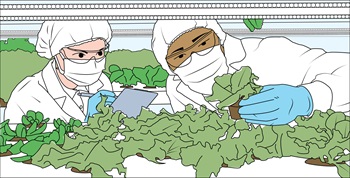By LeAnn Chuboff, VP of Technical Affairs
 For the first time ever, the SQF Code mandates all sites need a substitute or backup SQF practitioner. While many SQF sites have maintained both a primary and substitute (sometimes more than one) SQF practitioner as a best practice, this practice will become a mandatory element on May 24th, 2021. Under 2.1.1.4 in Part B of the SQF Code Edition 9, senior site management shall designate a primary and substitute SQF practitioner for each site. Like the primary practitioner, the substitute practitioner will need to have the training and authority to maintain the integrity of the SQF System.
For the first time ever, the SQF Code mandates all sites need a substitute or backup SQF practitioner. While many SQF sites have maintained both a primary and substitute (sometimes more than one) SQF practitioner as a best practice, this practice will become a mandatory element on May 24th, 2021. Under 2.1.1.4 in Part B of the SQF Code Edition 9, senior site management shall designate a primary and substitute SQF practitioner for each site. Like the primary practitioner, the substitute practitioner will need to have the training and authority to maintain the integrity of the SQF System.
Maintaining an SQF System is no easy feat. With each site’s SQF system made up of a multi-personnel Food Safety Team and multiple systems including a food safety plan, and verification and validation processes – it is safe to say the SQF practitioner has many responsibilities. To facilitate such a comprehensive system, having a substitute practitioner reduces the vulnerability of your site and better protects the SQF System’s integrity.
Here are some scenarios to consider:
An industrial oven in one of your lines breaks down at 3AM on a Sunday. Your SQF practitioner will need to come in quickly to fix the calibration and make some follow up decisions.
It is not sustainable to ask your SQF practitioner to always be on call 24/7, 365 days of the year. This leaves your SQF System entirely too reliant upon one focal point – your primary SQF practitioner.
Your SQF practitioner suddenly comes down with a flu and cannot come on site during your annual audit.
In this case, having a substitute practitioner to step into the role of facilitating the audit will save your site time and money.
John, your site’s long-time SQF practitioner with 30+ years under his belt, has decided to retire and spend more time with his family.
Your site’s substitute practitioner will be instrumental during this transition period in maintaining the integrity of your site’s SQF System.
The SQF practitioner shoulders a heavy responsibility. More than ever, it’s important to ensure your site’s SQF practitioner has all the support and resource he or she needs – starting with appointing a substitute SQF practitioner.
Here are some best practices to consider:
- Consider having different SQF practitioners to oversee different work shifts.
Sharing responsibilities will help your site better sustain your SQF system and remain in compliance. “It’s a wise decision to designate one primary practitioner per shift and one substitute practitioner per shift”, says Jeff Chilton, Vice President of Consulting with Intertek Alchemy.
- Plan and maximize the time spent during your site’s monthly senior management meetings.
Be sure to include your substitute practitioner during the meeting and bring up any resources needed to keep your SQF System in compliance.
- Devise a plan to conduct routine inspections throughout the year that shares the monitoring activities.
Create an internal system that works for you and your team. Break up the inspections, have a plan, create a checklist, and hold each other accountable.
“The SQF practitioner is the champion for the food safety process, not the sole anchor,” says Jeff. Just as success cannot be accomplished in a silo, an SQF System cannot be maintained by one person. You need an involved management team, an internal food safety team, a primary SQF practitioner, and now a substitute SQF practitioner. “Substitute Practitioners will add more depth to the SQF System and provide an opportunity for individuals to grow in their professional development”, says Jeff.
Be prepared for Edition 9 implementation on May 24th, 2021. Learn more about the substitute SQF practitioner and all the other changes within the SQF Code Edition 9. Ensure your site, SQF practitioners and food safety team has access to the training and development needed to be successful.

